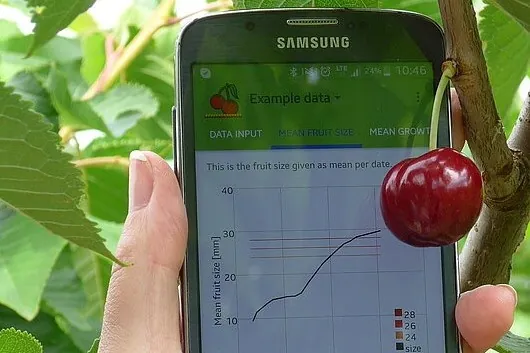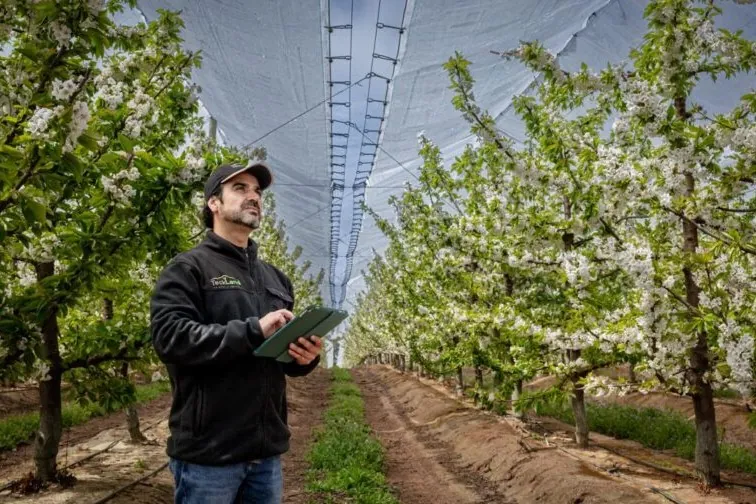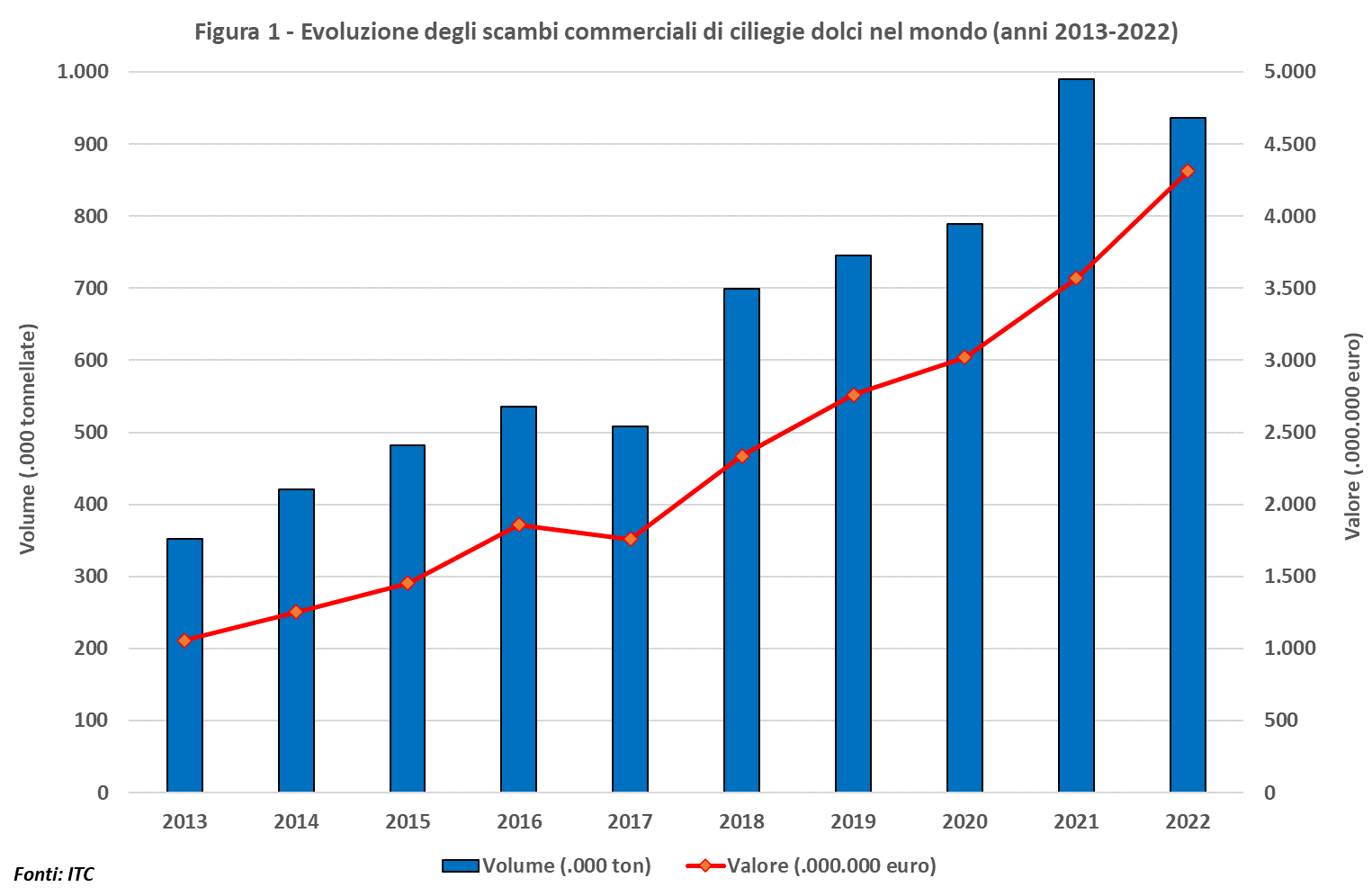Achieving high-quality cherry production requires a constant presence in the orchard, ensuring that every cultural practice needed by the trees is performed at the right time.
The growth of cherry trees is strongly influenced by multiple environmental factors — such as temperature, wind speed, humidity, and soil characteristics — and if these elements are not precisely monitored, they can compromise both the quality and quantity of the harvest, leading to significant losses.
For instance, trees may show early signs of disease or develop fruits that ripen unevenly. If such signals are not correctly observed and analyzed, they can first reduce fruit quality and then lead to unnecessary production waste.

Technological innovation in orchards
The natural solution seems to be continuous field presence, either personally or through specialized labor… but is that really the only way?
The adoption of emerging technologies — including sensors, automation, robotics, artificial intelligence, the Internet of Things, and advanced digital systems — is revolutionizing the entire sector.
These innovations pave the way toward more sustainable, efficient, and intelligent production while also improving post-harvest fruit management.
Since orchards often extend over large areas, it is undeniably challenging for cherry growers to observe every tree in detail. To address this issue, there is growing interest in precision monitoring techniques capable of assessing the condition of individual plants.
Precision monitoring and data analysis
Among these, the use of drones offers an innovative solution for crop health monitoring and yield forecasting.
In this context, a study conducted by the Universidad de O’Higgins and the Pontificia Universidad Católica de Chile proposes a new methodology for assessing the development and ripening of sweet cherries, based on a wireless agroclimatic sensor network combined with remote fruit detection systems.
Climate data are collected by field sensors, transmitted, and modelled using a k-Nearest Neighbors (k-NN) regressor. At the same time, RGB images are captured along the tree rows; fruit detection is performed using deep learning algorithms, and tracking is carried out with Kalman filters.
Results and challenges
Based on these technologies, two approaches have been developed to estimate the distribution of fruit maturity: one through video data analysis and another using only data from the agroclimatic sensor network.
The methods were validated across five productive orchards, achieving a mean squared error below 5% in maturity estimation — even when relying solely on climatic data.
This demonstrates that it is possible to predict cherry maturity using only environmental sensors, once properly calibrated with computer vision techniques.
This approach combines environmental data with remote fruit tracking and counting, offering a precise and low-cost assessment of crop maturity.
Expanding applicability
However, the limited dataset size and the narrow range of cherry cultivars analyzed suggest the need to expand the study to include orchards exposed to different climatic conditions, in order to make the models more generalizable.
Another key challenge lies in the high variability among individual trees, which affects prediction accuracy.
Integrating previous experimental data with maturity and climatic information could help mitigate this variability and further enhance model reliability.
Source: JOUR, Orchard sweet cherry color distribution estimation from wireless sensor networks and video-based fruit detection, Cossio-Montefinale, Luis, Quiñinao, Cristóbal, Verschae, Rodrigo, Computers and Electronics in Agriculture, 235, 110334, 2025, 2025/08/01/0168-1699, https://doi.org/10.1016/j.compag.2025.110334
Image source: ATB
Melissa Venturi
University of Bologna (IT)
Cherry Times - All rights reserved













